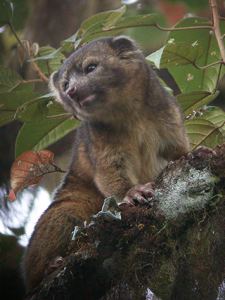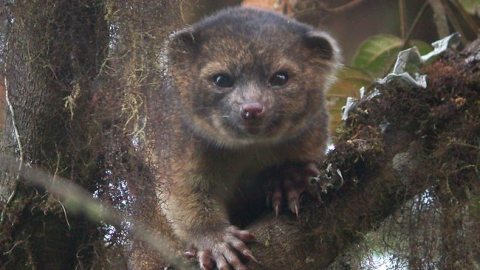World News – A cute little creature recently was discovered by the Smithsonian scientists in the raccoon family and boy is he a cute one. This is just amazing when even though it seems that we have scoured every single corner of the earth, there are still things left to be uncovered.
 The rainforests and the mountains and the valleys have given up their secrets to the generations of intrepid explorers and naturalists who have catalogued hundreds of thousands of separate species. Today, when as many as 100,000 species go extinct each year, all that’s left is to count up the losses.
The rainforests and the mountains and the valleys have given up their secrets to the generations of intrepid explorers and naturalists who have catalogued hundreds of thousands of separate species. Today, when as many as 100,000 species go extinct each year, all that’s left is to count up the losses.
But as it turns out that the age of discovery might not yet be over. Today Smithsonian scientists announced that they had discovered a new species of mammal: the raccoon-like olinguito. While the discovery of new species of invertebrates or amphibians isn’t unusual, a new species of carnivorous mammal hasn’t been identified since the 2010 discovery of the Durrell’s vontsira in Madagascar in 2010—and a mammal hasn’t been discovered in the Western Hemisphere since 1978. “The discovery of the olinguito shows us that the world is not yet completely explored, its most basic secrets not yet revealed,” Smithsonian zoologist Kristofer M. Helgen, who led the effort to identify the olinguito, told the Smithsonian magazine.
Though the journey to find the olinguito ended in the Andes mountains of South America, it began amid the well-preserved specimens of Chicago’s Field Museum in 2003. Helgen, who has uncovered dozens of mammal species during his career as a naturalist, was trying to better describe the olingos that were already known to be living in Central and South America. At the Field Museum Helgen found olingo specimens that had reddish-brown, long fur—odd, because the known species of olingos have short, gray fur. After visiting nearly 20 different museums, Helgen found dozens of olingo specimens that didn’t fit the norm.
That was enough evidence to set out on a field expedition to the cloud forests of Ecuador with the biologist Roland Kays of the North Carolina Museum of Natural Sciences and C. Miguel Pinto of the American Museum of Natural History in New York. They managed to find a few mammals that resembled the specimens found in Helgen’s research, and after working with a local hunter, they managed to shoot and capture one of the animals. It was identical to what Helgen had seen before. Later genetic analysis showed that the olinguito—the Spanish suffix “-ito” was attached to denote the smaller size of the new species—shared only 90% of its DNA with other olingos living close by.
The fact that a new mammal species was able to be identified thanks to the careful examination of existing museum specimens gives hope that there may be other species out there to be discovered in the dusty archives of natural museums around the world. More than that, though, discovering a new mammal gives conservationists a rare victory as they fight against the present day’s great wave of extinction. This world, so under threat, still has more to show us.
By Bryan Walsh, Edited By Dan Stevens science.time.com/

